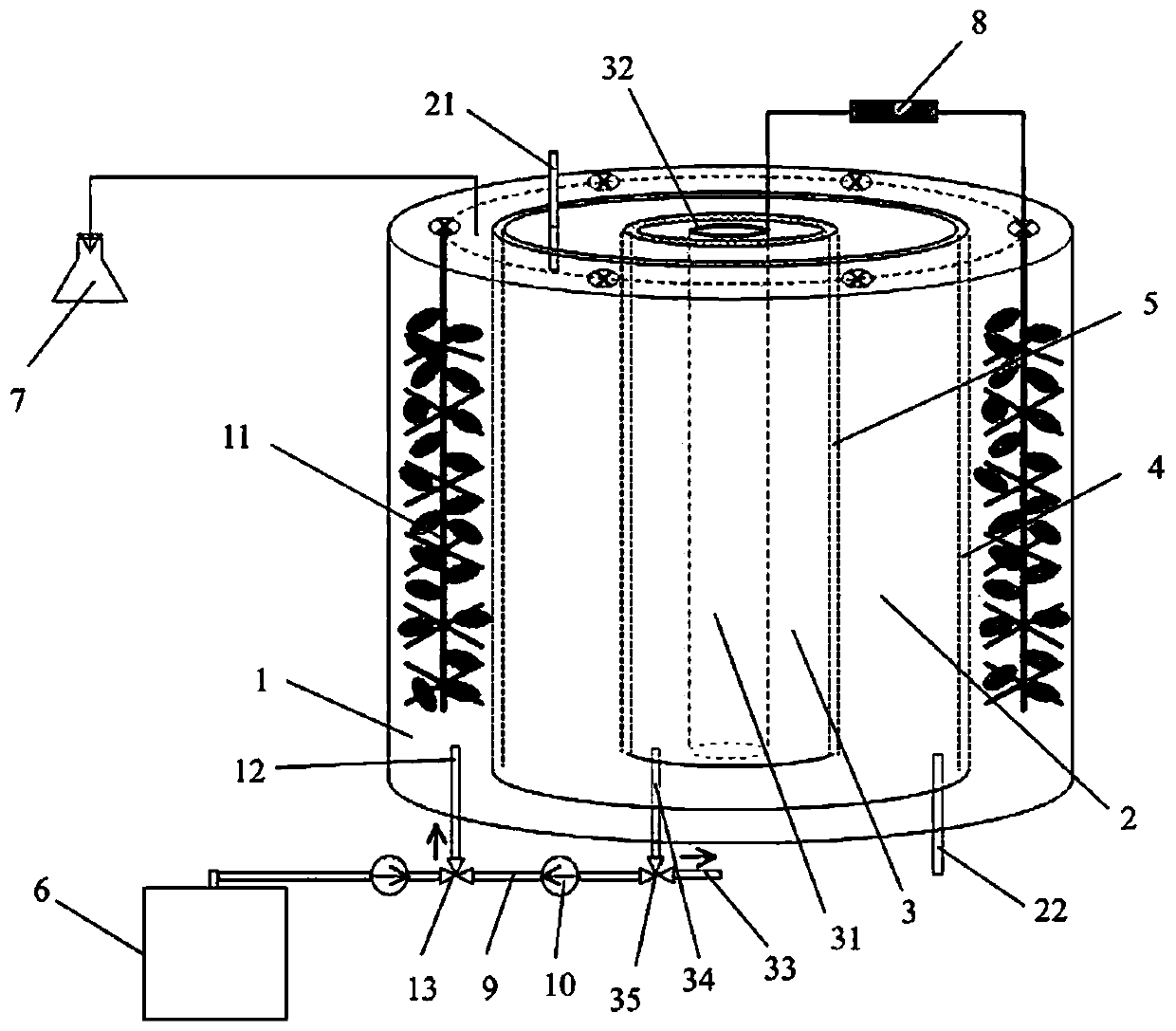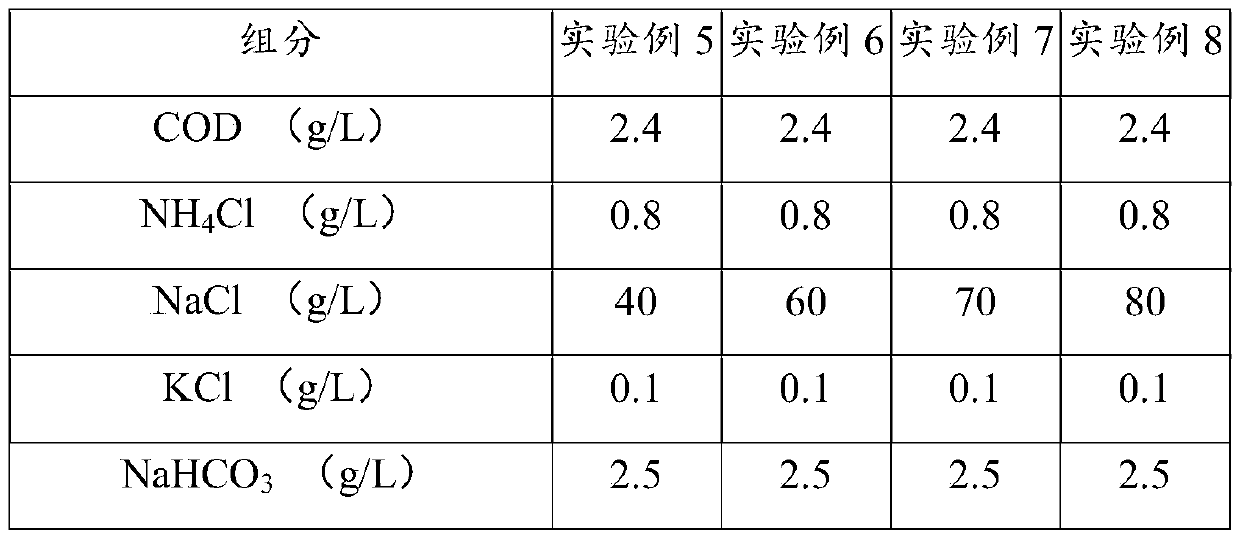Method for treating high-salt wastewater and recycling nutritive salt through microbial desalination cell
A technology for microbial desalination and high-salt wastewater, applied in the field of environmental pollution biological treatment, can solve the problems of inability to adapt to treatment, high power consumption for operation, low environmental benefits, etc., and achieve the effects of efficient recovery, improved degradation, and improved power generation performance.
- Summary
- Abstract
- Description
- Claims
- Application Information
AI Technical Summary
Problems solved by technology
Method used
Image
Examples
Embodiment 1
[0029] Using the microbial desalination battery of the present invention to treat high-salt wastewater and recover nutrient salts comprises the following steps:
[0030] Step 1. Domestication of the anode microbial community
[0031] Under high-salt and high-ammonium conditions (NaCl concentration 58-62g / L, NH 4 + At a concentration of 0.3-0.9g / L), the anode microorganisms of the microbial desalination battery are domesticated. After the output voltage of the desalination battery is stable, the microbial community successfully domesticated under this condition is obtained. The microbial community has nitrifying and denitrifying functional bacteria, which can It effectively promotes the removal of ammonium and the degradation of organic matter, and at the same time has a specific bacterial group that reduces nitrate, which can significantly improve the recovery of ammonium.
[0032] Step 2. Assembly of microbial desalination battery
[0033]The reactor is columnar, and there...
Embodiment 2
[0042] Using the microbial desalination battery of the present invention to treat high-salt wastewater and recover nutrient salts comprises the following steps:
[0043] Step 1. Domestication of the anode microbial community
[0044] Under the condition of high salt and high ammonium (NaCl concentration 58~62g / L, NH 4 + Concentration of 0.3~0.9g / L) to domesticate the anode microorganisms of the microbial desalination battery. After the output voltage of the desalination battery is stable, the microbial community successfully domesticated under this condition is obtained. The microbial community has nitrifying and denitrifying functional bacteria, which can effectively Promote the removal of ammonium and the degradation of organic matter, and at the same time have a specific bacterial population that reduces nitrate, which can significantly improve the recovery of ammonium.
[0045] Step 2. Assembly of microbial desalination battery
[0046] The reactor is columnar, and ther...
Embodiment 3
[0055] Using the microbial desalination battery of the present invention to treat high-salt wastewater and recover nutrient salts comprises the following steps:
[0056] Step 1. Domestication of the anode microbial community
[0057] Under high-salt and high-ammonium conditions (NaCl concentration 58-62g / L, NH 4 + At a concentration of 0.3-0.9g / L), the anode microorganisms of the microbial desalination battery are domesticated. After the output voltage of the desalination battery is stable, the microbial community successfully domesticated under this condition is obtained. The microbial community has nitrifying and denitrifying functional bacteria, which can It effectively promotes the removal of ammonium and the degradation of organic matter, and at the same time has a specific bacterial group that reduces nitrate, which can significantly improve the recovery of ammonium.
[0058] Step 2. Assembly of microbial desalination battery
[0059] The reactor is columnar, and ther...
PUM
 Login to View More
Login to View More Abstract
Description
Claims
Application Information
 Login to View More
Login to View More - R&D
- Intellectual Property
- Life Sciences
- Materials
- Tech Scout
- Unparalleled Data Quality
- Higher Quality Content
- 60% Fewer Hallucinations
Browse by: Latest US Patents, China's latest patents, Technical Efficacy Thesaurus, Application Domain, Technology Topic, Popular Technical Reports.
© 2025 PatSnap. All rights reserved.Legal|Privacy policy|Modern Slavery Act Transparency Statement|Sitemap|About US| Contact US: help@patsnap.com



